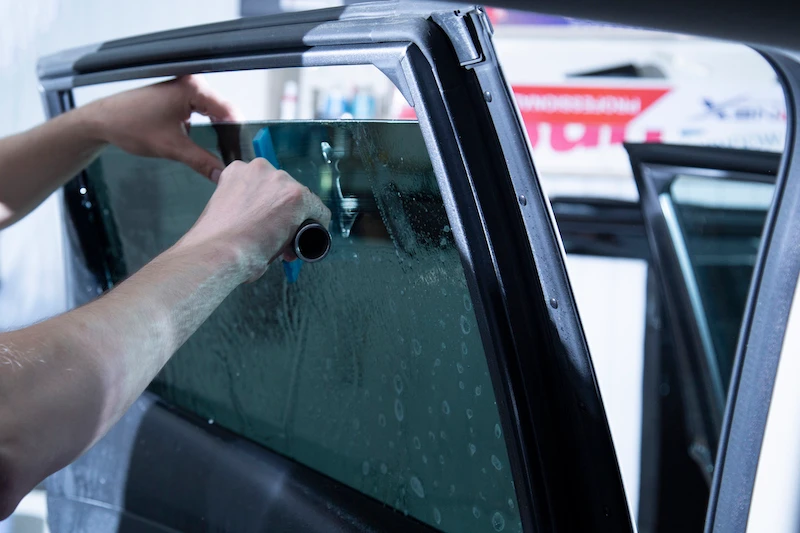Find Out About the Advantages of Tinting for Enhanced Privacy and UV Protection
Its ability to obstruct a substantial portion of unsafe UV rays offers as an essential protect versus prospective skin damage and the fading of interior home furnishings. As we discover the multifaceted advantages of window tinting, one may wonder just how these advantages expand beyond personal privacy and UV security, influencing convenience and design in unpredicted methods.
Enhancing Privacy With Tinting

In residential setups, window tinting offers home owners a feeling of safety and security and comfort. For commercial spaces, specifically offices and retail environments, tinting offers as a calculated step to shield sensitive information and keep confidentiality.
Beyond its privacy benefits, tinting also contributes to the aesthetic improvement of buildings. Readily available in different tones and surfaces, it can complement building design and styles preferences, giving a modern-day and sleek look. By purchasing window tinting, both property owners and businesses can achieve an equilibrium of performance, personal privacy, and design.
Decreasing UV Direct Exposure
Reducing exposure to ultraviolet (UV) rays is an additional significant advantage of window tinting. UV rays are a form of electromagnetic radiation from the sunlight, which can pass through windowss and present threats to both furnishings and individuals. Long term direct exposure can result in skin damages, early aging, and even raise the risk of skin cancer. For interior home furnishings, UV rays can create fading and deterioration in time, considerably minimizing the life-span of fabrics, artwork, and wood surfaces.
Window tinting effectively decreases the penetration of unsafe UV rays by blocking up to 99% of them, depending on the type and quality of the tint. This safety obstacle is vital in safeguarding residents from the unfavorable health effects related to UV exposure. It aids preserve the aesthetic and structural stability of interior components, maintaining their look and value.
In addition to health and conservation benefits, reducing UV direct exposure through tinting adds to energy efficiency by lessening heat absorption. Although this element results in cooler insides, the main focus here is its duty in UV security. By selecting window tinting, people and businesses can take pleasure in a healthier and even more lasting living or working atmosphere.
Keeping Interiors Cool

This capacity to regulate warmth intake not just improves comfort but additionally adds to energy efficiency. By reducing the need for extreme air conditioning, tinted windowss can cause obvious reductions in power consumption and utility prices. This is especially useful for huge structures, where the cooling needs are considerable. Additionally, keeping a constant interior temperature lowers the stress on heating and cooling systems, possibly prolonging their lifespan and decreasing maintenance prices.
Additionally, cooler insides can improve efficiency and total wellness. Comfortable temperature levels contribute to better focus and lowered fatigue, making colored windowss an attractive alternative for offices and industrial rooms intending to optimize worker efficiency. In recap, window tinting is a useful investment for maintaining cooler and a lot more energy-efficient insides.
Protecting Inside Furnishings
Window tinting provides a critical layer of protection for indoor home furnishings by obstructing approximately 99% of harmful ultraviolet (UV) rays. Extended exposure to UV rays can trigger considerable damages to furniture, artwork, and flooring, leading to fading and wear and tear over time. This destruction not only diminishes the aesthetic Visit Your URL and functional worth of these items yet additionally demands regular replacements, incurring additional costs.
By reducing UV direct exposure, window tinting effectively maintains the vibrancy and honesty of materials, wood, and other products made use of in interior decor. This safety measure makes sure that shades continue to be brilliant and materials retain their initial appearance and stamina, extending the lifespan of valued furnishings. Additionally, it aids preserve the indoor setting's aesthetic appeal, which is specifically crucial precede where aesthetics play an important role, such as homes, workplaces, and retail settings.
In addition, window tinting contributes to power effectiveness by decreasing warm transfer, which can also indirectly profit furnishings. By lowering the amount of warmth entering via windowss, colors help keep a stable interior temperature, stopping thermal tension on products that can cause warping or fracturing. Therefore, window tinting acts as a detailed solution for securing and maintaining interior possessions.
Aesthetic and Style Benefits
Beyond the safety qualities of window tinting, its visual and layout advantages include significant value to any kind of space. Window tinting offers a contemporary and smooth look, enhancing the sophistication and refinement of both domestic and industrial setups. It provides an uniform exterior look that can effortlessly incorporate with any architectural style, consequently enhancing curb appeal and building worth.
A selection of color tones and finishes are available, enabling personalization to match details layout choices. This versatility makes it possible for architects and interior designers to achieve desired visual effects, whether intending for a vibrant declaration or a minimal design. For circumstances, reflective tints can produce a mirror-like exterior, using a contemporary edge, while neutral or bronze shades can imbue warmth and subtlety.

Final Thought
Tinting deals substantial advantages by improving personal privacy and decreasing UV direct exposure, making it a useful enhancement to both business and residential rooms. Additionally, tinting contributes to maintaining cooler indoor temperatures, thus enhancing comfort while offering visual and layout advantages, strengthening its worth as a wise financial investment.
Window tinting effectively reduces visit this site the infiltration of hazardous UV rays by obstructing up to 99% of them, depending on the kind and quality of the tint.By decreasing UV exposure, window tinting successfully protects the vibrancy and integrity of fabrics, timber, and various other products made use of in interior design. window tinting. By minimizing the quantity of warmth going into through windowss, colors assist keep a steady interior temperature, stopping thermal anxiety on materials that can cause bending or breaking. Therefore, window tinting offers as a detailed service for protecting and maintaining interior properties
Moreover, window tinting lowers glare, boosting the clearness and vibrancy of indoor spaces.